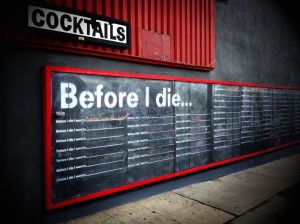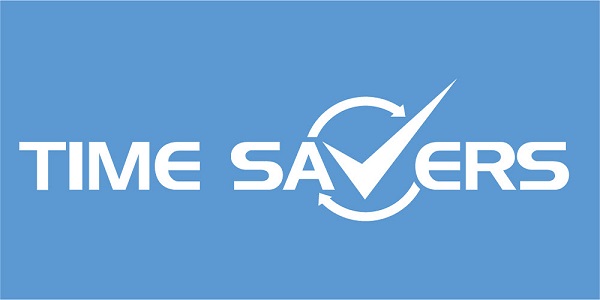A n adult who has ADHD tends to be impulsive and restless. At times they may have a difficult time paying attention. ADHD can make time management quite hard. Some of the symptoms of adult ADHD can mean that you are not aware of time passing, predicting how long a task will take, monitoring your work and making adjustments. If you have adult ADHD, here are some tips on how to manage your time better.
n adult who has ADHD tends to be impulsive and restless. At times they may have a difficult time paying attention. ADHD can make time management quite hard. Some of the symptoms of adult ADHD can mean that you are not aware of time passing, predicting how long a task will take, monitoring your work and making adjustments. If you have adult ADHD, here are some tips on how to manage your time better.
1. Create a New To Do List Each Day
Every morning you should make a list of the things that you want to accomplish for the day. Make sure that you keep your list realistic so that you have a better chance of getting to each thing. Your tasks should be arranged in order of importance. Each task should be assigned a specific time of the day. As you complete each task mark it off.
2. Check Your Planner 3 Times Each Day
Having too much to remember is a problem for everyone, but can especially be difficult for adults with ADHD. Make it a habit to put each of your activities and appointments on your calendar. You can use a smartphone app, a day planner, or a regular desk calendar. Keep the calendar in one spot and make sure that you check it at least 3 times each day. Make it a habit to check it during the same times every day.
3. Organize Each Room in your Home
Take on one room of your house at a time and begin organizing it. Start with the easiest room and do not become overwhelmed by “getting organized.” Organization time should be scheduled into your planner and use a timer in order to manage each work session. Start out by putting things where they go and throwing out anything that you do not need. When going through items have a keep and toss pile as well as a separate box for items that you want to go through later.
4. Create Daily Organizational Habits
Do not think of becoming organized as cleaning up. Instead, think of it as a plan. If you keep any items they should have a place to go. Every day schedule ten minutes to pick up and return your things to where they belong. If you take something out, put it back. Keep mislaid items and papers in a box and go through this at the end of each day.
5. Create a Rotating Menu
Menu planning may be a bit difficult. To overcome this and better manage your time create a list of 10 dinners or a regular rotating menu for dishes that can be easily cooked. Try to keep the ingredients for each of the menus on hand or list the necessary ingredients on index cards that can be taken with you to the grocery store. Keep a “free” night on your schedule so that you can order carry out or share the cooking responsibilities with other members of the household.
6. Create a Mail Routine
Create a system for sorting your mail each day. A special area for important mail such as bills, bank statements, etc. should be created. Plan a set time each week to sort through the mail to file important documents where they need to go.
7. Create a Budget
People with ADHD often have difficulty managing money. One of the reasons for this is impulse buying. Take an electronic device or notepad with you when you are shopping to write down everything that you spend. Knowing what you spend each month and what you spend it on will help you better manage your money.
8. Electronic Reminders
Forgetting your medication, meetings, deadlines or any of your other responsibilities is common for adults with ADHD and can create problems in both your work and social life. One way to help you remember is to set electronic reminders for your events. You can set your smartphone or computer to alert you 5, 10, or 15 minutes before each event on your calendar to help you stay on top of things.
9. Work Distractions
One of the biggest challenges for adults with ADHD is work distractions. There are several strategies that you can implement to help you better manage your time at work. First, turn your phone off and schedule set times to check your voicemail each day. At work, ask for a cubicle or office that is quiet. If possible use a white noise machine or headphones to drown out all of the other sounds at work. Finally, work on a single task at a time.
10. Fighting Boredom
One of the many problems for adults with ADHD is that they get bored easily. This is especially true when completing routine tasks. One of the ways to help you save time and meet your deadlines is to break up some of your larger tasks into smaller ones. After you complete a small task, take a small walk, even if it is just to the bathroom at work and back. When attending meetings, make sure to take notes to help alleviate boredom.
11. Take on Fewer Tasks
Simplifying your surroundings will help you keep better track of your belongings. It will also help to remove some of the distractions that may keep you from focusing. This can work for your schedule as well. Do not start a new project until you have completed the one that you are working on. Do not overschedule yourself by taking on too many tasks at one time. In order to stay focused you may need to practice saying no to any new tasks.
12. Exercise
Studies have shown that getting regular exercise may help a person with ADHD better manage their symptoms. The movement can help you channel some of your extra energy. Karate and Yoga are great choices for adults with ADHD because they provide the opportunity to memorize movements.
13. Set 15 Minute Blocks for Tasks
If you are struggling to start a project try setting a timer for fifteen minutes. During this time you focus on that single task. When the time expires you can decide if you can go for 15 more minutes. If you can focus and go on, reset the timer. Keep resetting the timer for 15 minute intervals until you can no longer focus. When you can no longer do anymore, try again later in the day.
14. Color Coding
One of the best ways to save time and to help you be better organized is to use color coding. You can color code notes, folders, and files. In your planner, use different colors to highlight different areas of your life such as work, family commitments, and dates with friends, and appointments.
15. Use your To Do Lists as a Guide
Look over your to do lists. Are there a lot of unfinished tasks? Why? Did you try to complete too much at once? Did you commit to too much? Did distractions keep you from completing your tasks? Use this knowledge to help you create new to do lists in the future. These lists can also help you come up with different ways to work more efficiently in the future.
Cassandra is the author of the eBook “How to Conquer ADD”. This guide covers how to cope with the challenges of ADD and how to take back control of your life. You can check out her blog for more great tips and information on how to overcome your attention deficit disorder at http://conqueradd.com/blog
Article Source: http://ezinearticles.com/expert/Cassandra_Greene/2063510

